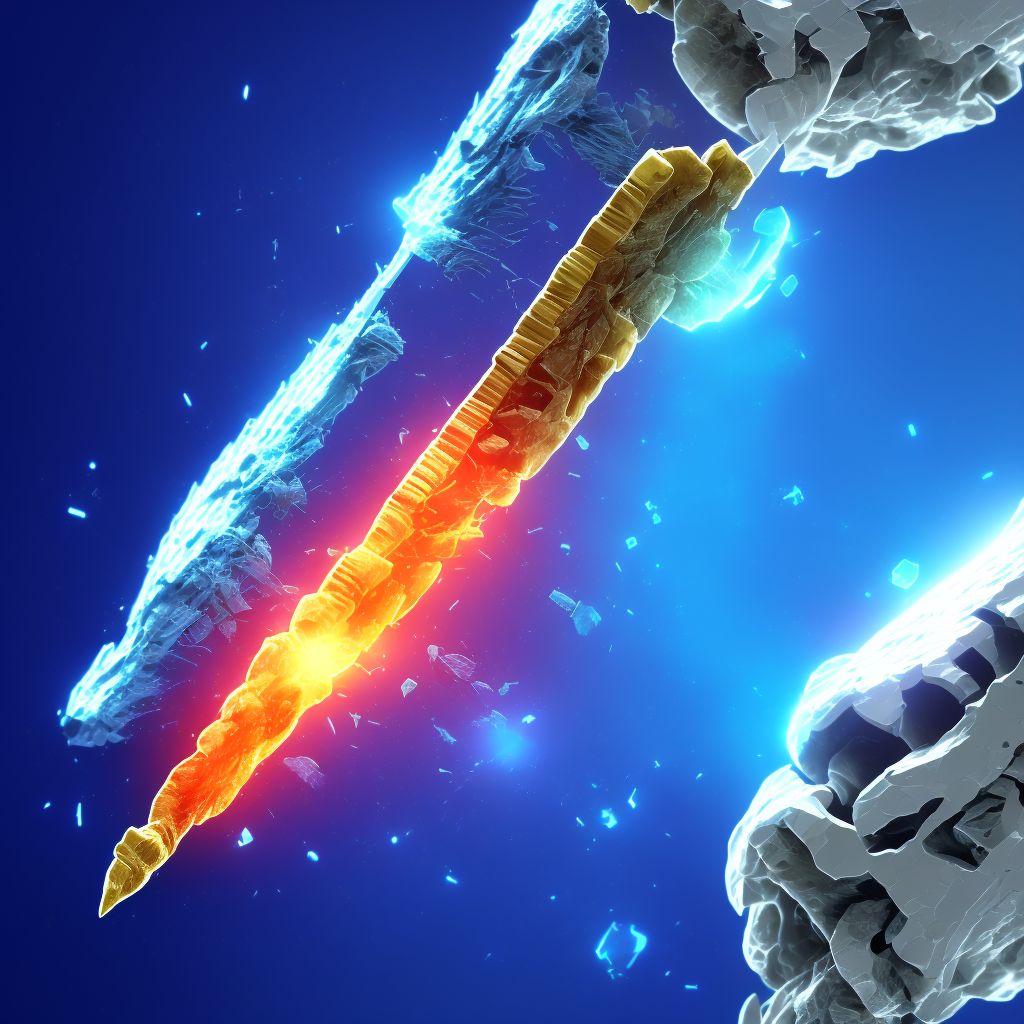
Other fracture of shaft of left tibia, subsequent encounter for open fracture type IIIA, IIIB, or IIIC with routine healing Save
ICD-10 code: S82.292F
Disease category: S82.292: Other fracture of shaft of left tibia
Understanding Other Fractures of the Shaft of the Left Tibia
When it comes to fractures, the other fracture of the shaft of the left tibia is a condition that requires careful attention. This article aims to provide a brief overview of this type of fracture, specifically focusing on subsequent encounters for open fracture type IIIA, IIIB, or IIIC with routine healing.
In the realm of orthopedic injuries, the tibia, also known as the shinbone, is a large bone located in the lower leg. Fractures in this area can occur due to various reasons, such as trauma, accidents, or sports-related injuries. The severity of the fracture can range from minor cracks to complete breaks.
Open fractures, also referred to as compound fractures, are particularly serious as they involve a break in the skin. In the case of open fracture type IIIA, IIIB, or IIIC, the fracture is classified based on the extent of soft tissue damage, severity of the injury, and potential complications.
- Open fracture type IIIA: This classification indicates a fracture where the wound is less than 1 cm in size, typically caused by a high-energy impact.
- Open fracture type IIIB: In this case, the wound is greater than 1 cm with extensive soft tissue damage, often requiring surgical intervention.
- Open fracture type IIIC: This classification denotes severe soft tissue injury, including arterial damage, which may necessitate amputation.
When a patient with this type of fracture undergoes subsequent encounters, it means they are receiving follow-up care after the initial treatment. Routine healing is a positive outcome, indicating that the bone has successfully mended, and the patient is on their way to recovery.
However, it's important to note that each patient's healing process may vary, and it is crucial to consult with a healthcare professional for an accurate diagnosis and personalized treatment plan.
In conclusion, other fractures of the shaft of the left tibia, specifically subsequent encounters for open fracture type IIIA, IIIB, or IIIC with routine healing, require proper medical attention and care. This article has provided a brief understanding of the condition, but it's crucial to consult a healthcare professional for a comprehensive evaluation and appropriate treatment.
Treatment of Other fracture of shaft of left tibia, subsequent encounter for open fracture type IIIA, IIIB, or IIIC with routine healing:
Treatment Options for 'Other Fracture of Shaft of Left Tibia, Subsequent Encounter for Open Fracture Type IIIA, IIIB, or IIIC with Routine Healing'
Dealing with a fracture can be a daunting experience, but with the right treatment options, you can ensure a smooth recovery. In the case of an 'Other Fracture of Shaft of Left Tibia, Subsequent Encounter for Open Fracture Type IIIA, II...
To see full information about treatment please Sign up or Log in